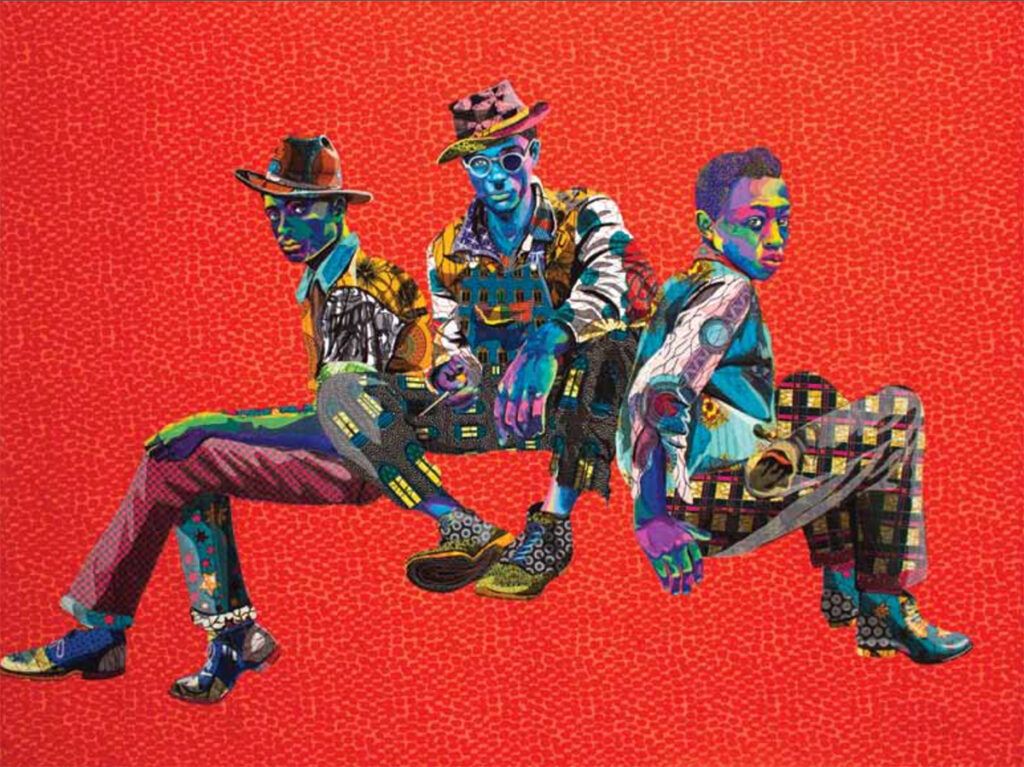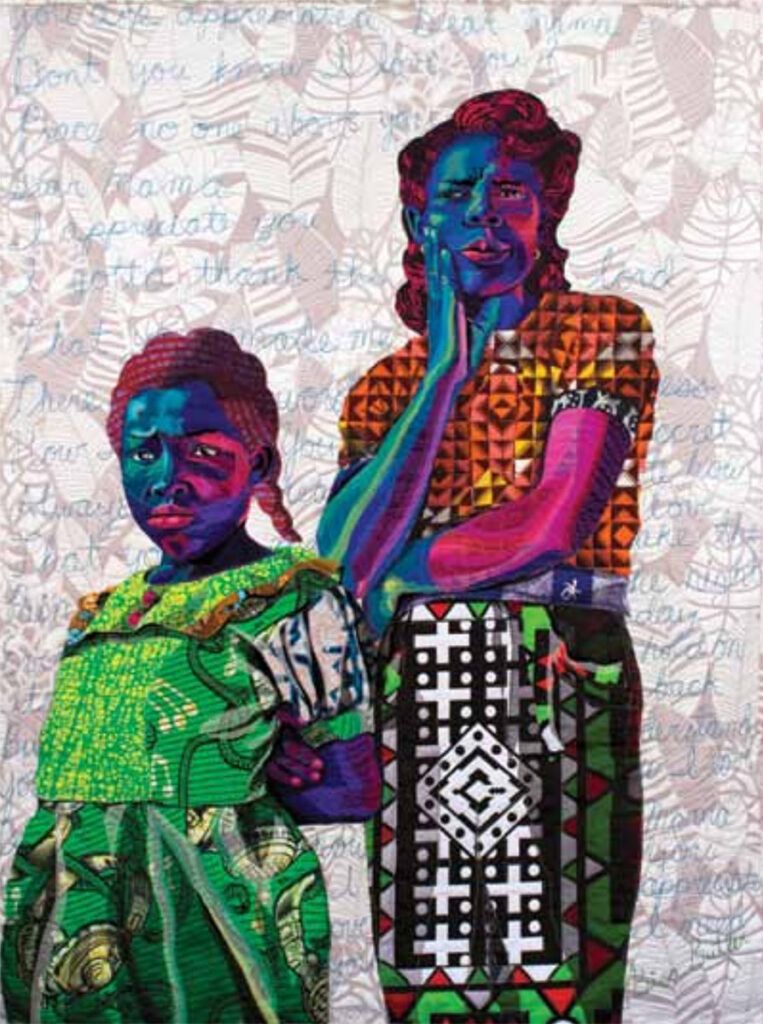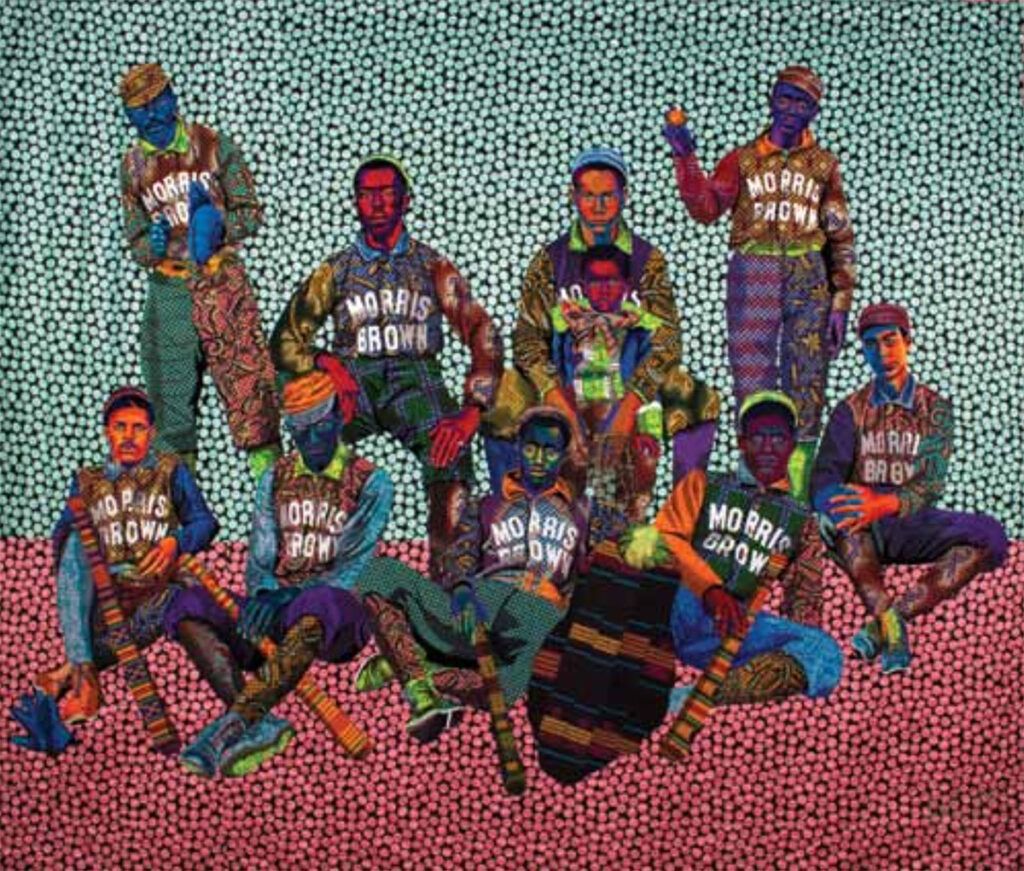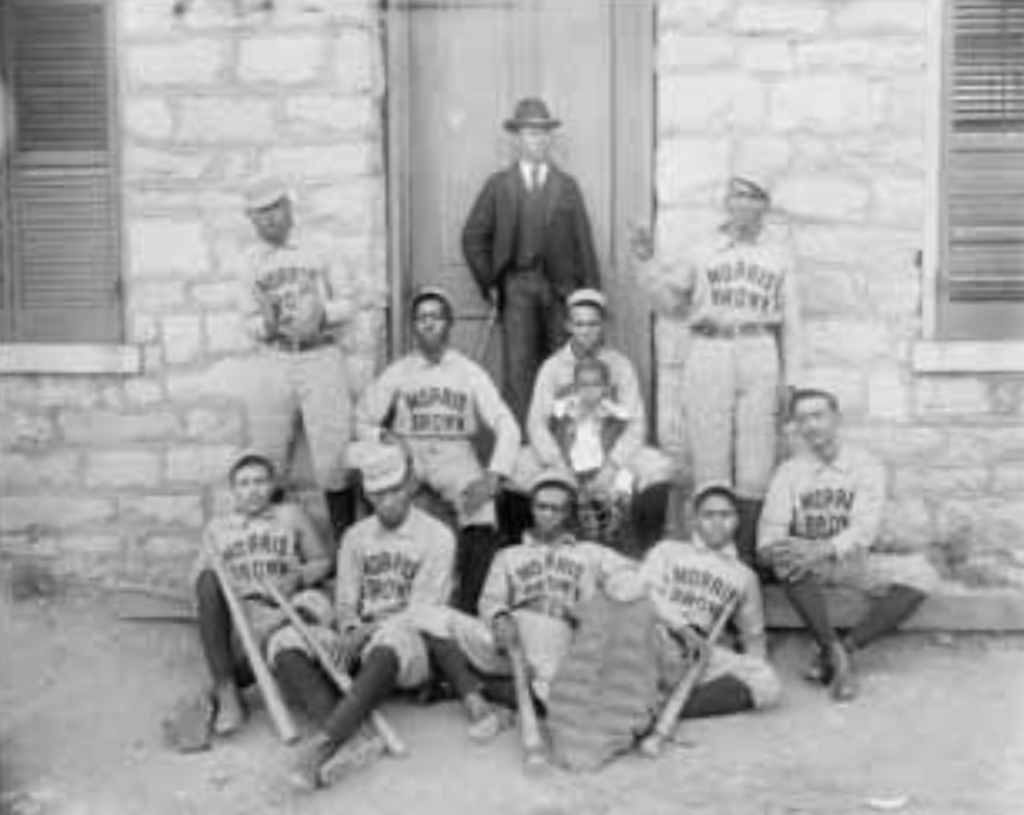
Bisa Butler and the Fine Art of Quilting
Brooklyn-based artist Bisa Butler uses textiles and stitchery to make compelling African-American portraits that tell meaningful stories.
Bisa Butler knew that being an artist was her destiny when she first won recognition for her efforts at the age of 5. She later attended Howard University as an art major and had empathetic professors who encouraged her to “infuse her work with life.”
The explosive energy of Butler’s boldly patterned, brightly colored stitched and quilted portraits have become her response to her professors’ directive. Butler wasn’t always a textile artist. As a student, she had studied painting. When she became a mother, she could no longer tolerate the smell of oil paint and was interested in a medium with fewer safety concerns. She took a quilting/sewing class and knew she had found her medium.
The Ties That Bind
The idea of family—generations of unique individuals forming a collective group united by their shared history—is the foundation upon which Butler builds her imagery, as seen in Dear Mama. All of her work is part of an ongoing autobiography. “I used to sit by my grandmother’s side, and we’d go through her photo album and she’d tell me family stories,” the artist says.
Those stories have become part of the narrative Butler tells through the use of traditional African fabrics, bits of lace from her grandmother and mother, and other fabric scraps proffered by friends and fellow artists. “I choose colors based on sensation and mood,” she says.
Primarily a portrait artist, Butler’s subjects are distinct personalities stitched and built up in layers, sheer chiffon over a printed or intensely colored textile, just as a painter might use glazes for a particular effect.


The Power of Story
Butler’s reputation is growing. “Bisa Butler: Portraits,” which showed at the Katonah Museum of Art, in N.Y., in early 2020, was the first solo museum exhibition of the artist’s work. It featured 26 of her vivid, larger-than-life quilts that capture African-American identity and culture. In late 2020 and early 2021, her work was exhibited at the Art Institute of Chicago. Her quilted portraits have been acquired by a number of prestigious museums, including The Smithsonian National Museum of African American History and Culture, The Nelson-Adkins Museum, The Los Angeles County Museum of Art, and the Museum of Fine Arts, Boston (MFA). It was 2019, and Butler was working on what was then her most ambitious project to date, when she received a call from her dealer, Claire Oliver, informing her that the MFA wanted to purchase that piece.

That piece, To God and Truth, features nine life-sized figures based on a historical photo of the 1899 baseball team from Atlanta, Georgia’s Morris Brown College, founded in 1881 by the African Methodist Episcopal Church. The MFA, which holds one of the most significant collections of historical and contemporary quilts in America, purchased the quilt in anticipation of a comprehensive quilt exhibition, “Fabric of a Nation,” which opened in 2021.

(ca 1899; silver gelatin print, 8×10)
Library of Congress, Prints & Photographs Division
Lauren Whitley, senior curator of the David and Roberta Logie Department of Textile and Fashion Arts, was responsible for overseeing this acquisition. Whitley describes her visit to Butler’s home studio that summer: “It was incredible. We got a chance to view our acquisition, To God and Truth, which Bisa was in the final stages of completing. We hung it up in her living room (which was challenging, as the piece is 10×12 feet) and were dazzled by the way she combined fabrics and textures to render such complexity and humanity in the faces. She’s truly brilliant at bringing to life people from the past through intensely colored and patterned fabrics. It was deeply rewarding to discuss Bisa’s connections with family, fabric and old photographs, and her commitment to giving visual expression to African-American lives, often left out of history. She also shared her pleasure in connecting with the legacy of African-American quilt-making, such an important cultural tradition.”
